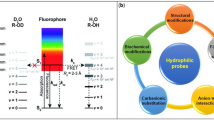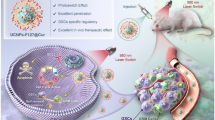Abstract
Photodynamic therapy (PDT) is based on special light source, photosensitizer (PS), and in the presence of oxygen. Different light sources have been used for PDT applications. Recent studies have focused on LED light sources for PDT applications due to reducing the cost of laser-based PDT and providing easy access for research laboratory or clinic facilities. LED-mediated PDT applications have shown promising results for the treatment of different types of disease. However, few studies have determined the effects of LED-based PDT on cancer cells. For the first time, the aim of this study was to explore the therapeutic effects of 5-aminolevulinic acid (5-ALA)-mediated PDT after LED irradiation on two sub-types (a poorly aggressive MCF-7 and a highly aggressive MDA-MB-231) of breast cancer cell lines. The effectiveness of 5-ALA PDT treatment was evaluated by WST-1, annexin V, and acridine orange staining with different energy levels. The LED system was specially developed with optical power and wavelength stability techniques. The system consists of user interface and embedded LED controller with real-time optic power output calibration by photodiode feedback. Our results demonstrated that the cell viability of breast cancer cells was considerably decreased a LED dose-dependent manner (P < 0.05). Additionally, a significant increase in the percentage of apoptotic cells was detected in breast cancer cells after irradiation with LED at a density of 18 and 30 J/cm2 energy. Consequently, the LED system could be effectively used for irradiation of 5-ALA in the treatment of breast cancer cells.



Similar content being viewed by others
References
Dolmans D, Fukumura D, Jain R (2003) Photodynamic therapy for cancer. Nat Rev Cancer 3:380–387. https://doi.org/10.1038/nrc1071
Agostinis P, Berg K, Cengel KA et al (2011) Photodynamic therapy of cancer: an update. CA Cancer J Clin 61:250–281. https://doi.org/10.3322/caac.20114
Castano AP, Demidova TN, Hamblin MR (2004) Mechanisms in photodynamic therapy: part one-photosensitizers, photochemistry and cellular localization. Photodiagn Photodyn Ther 1:279–293. https://doi.org/10.1016/S1572-1000(05)00007-4
Wilson BC, Patterson MS (2008) The physics, biophysics and technology of photodynamic therapy. Phys Med Biol 53:R61–R109. https://doi.org/10.1088/0031-9155/53/9/R01
Panjehpour M, Overholt BF, DeNovo RC, Petersen MG, Sneed RE (1993) Comparative study between pulsed and continuous wave lasers for photofrin photodynamic therapy. Lasers Surg Med 13(3):296–304. https://doi.org/10.1002/lsm.1900130306
Neckel CP (2001) Comparative study on cw mode versus pulsed mode in AlGaAs-diode lasers. Proc SPIE 4249, Lasers in Dentistry VII. https://doi.org/10.1117/12.424515
Mang TS (2004) Lasers and light sources for PDT: past, present and future. Photodiagn Photodyn Ther 1(1):43–48. https://doi.org/10.1016/S1572-1000(04)00012-2
Matthewson K, Coleridge-Smith P, Northfield TC et al (1986) Comparison of continuous-wave and pulsed excitation for interstitial neodymiurn-YAG laser-induced hyperthermia. Lasers Med Sci 1:197–201. https://doi.org/10.1007/BF02040238
Feather JW, Driver KPR, Lowdell C, Dixon B (1990) Light delivery to tumour tissue through implanted optical fibres during photodynamic therapy. Lasers Med Sci 5:345–350
Star WM (1990) Light delivery and light dosimetry for photodynamic therapy. Lasers Med Sci 5:107–113
Murrer LH, Marijnissen JP, Star WM (1996) Light distribution by linear diffusing sources for photodynamic therapy. Phys Med Biol 41:951–961
Juzeniene A, Juzenas P, Ma LW, Iani V, Moan J (2004) Effectiveness of different light sources for 5-aminolevulinic acid photodynamic therapy. Lasers Med Sci 19:139–149
Sandell JL, Zhu TC (2011) A review of in-vivo optical properties of human tissues and its impact on PDT. J Biophotonics 4(11-12):773–787. https://doi.org/10.1002/jbio.201100062
Lim HS (2011) Development and optimization of a diode laser for photodynamic therapy. Laser Ther 20(3):195–203. https://doi.org/10.5978/islsm.20.195
Kamanli AF, Yildiz MZ, Arslan H et al (2020) Development of a new multi-mode NIR laser system for photodynamic therapy. Opt Laser Technol 128:106229
Agut-Busquet E, Romaní J, Gilaberte Y et al (2016) Photodynamic therapy with intralesional methylene blue and a 635 nm light-emitting diode lamp in hidradenitis suppurativa: a retrospective follow-up study in 7 patients and a review of the literature. Photochem Photobiol Sci 15(8):1020–1028. https://doi.org/10.1039/c6pp00082g
Saager RB, Cuccia DJ, Saggese S, Kelly KM, Durkin AJ (2013) A light emitting diode (LED) based spatial frequency domain imaging system for optimization of photodynamic therapy of nonmelanoma skin cancer: quantitative reflectance imaging. Lasers Surg Med 45(4):207–215. https://doi.org/10.1002/lsm.22139
Leal CRL, Alvarenga LH, Oliveira-Silva T et al (2017) Antimicrobial photodynamic therapy on Streptococcus mutans is altered by glucose in the presence of methylene blue and red LED. Photodiagn Photodyn Ther 19:1–4. https://doi.org/10.1016/j.pdpdt.2017.04.004
Wawrzyniec K, Kawczyk-Krupka A, Czuba ZP, Król W, Sieroń A (2015) The influence of ALA-mediated photodynamic therapy on secretion of selected growth factors by colon cancer cells in hypoxia-like environment in vitro. Photodiagn Photodyn Ther 12(4):598–611. https://doi.org/10.1016/j.pdpdt.2015.11.001
Lim HJ, Oh CH (2011) Indocyanine green-based photodynamic therapy with 785nm light emitting diode for oral squamous cancer cells. Photodiagn Photodyn Ther 8(4):337–342. https://doi.org/10.1016/j.pdpdt.2011.06.002
Jamali Z, Hejazi SM, Ebrahimi SM, Moradi-Sardareh H, Paknejad M (2018) Effects of LED-based photodynamic therapy using red and blue lights, with natural hydrophobic photosensitizers on human glioma cell line. Photodiagn Photodyn Ther 21:50–54. https://doi.org/10.1016/j.pdpdt.2017.11.002
Hatakeyama T, Murayama Y, Komatsu S et al (2013) Efficacy of 5-aminolevulinic acid-mediated photodynamic therapy using light-emitting diodes in human colon cancer cells. Oncol Rep 29(3):911–916. https://doi.org/10.3892/or.2013.2220
Tanaka M, Kataoka H, Mabuchi M et al (2011) Anticancer effects of novel photodynamic therapy with glycoconjugated chlorin for gastric and colon cancer. Anticancer Res 31(3):763–769
Ao C, Xie J, Li Wang L (2017) 5-aminolevulinic acid photodynamic therapy for anal canal condylomaacuminatum: a series of 19 cases and literature review. Photodiagn Photodyn Ther 19:308–344. https://doi.org/10.1016/j.pdpdt.2018.06.022
Wachowska M, Muchowicz A, Firczuk M et al (2011) Aminolevulinic acid (ala) as a prodrug in photodynamic therapy of cancer. Molecules 16(5):4140–4164. https://doi.org/10.3390/molecules16054140
Nokes B, Apel M, Jones C, Brown G, Lang JE (2013) Aminolevulinic acid (ALA): photodynamic detection and potential therapeutic applications. J Surg Res 181(2):262–271. https://doi.org/10.1016/j.jss.2013.02.002
Almerie MQ, Gossedge G, Wright KE, Jayne DG (2015) Photodynamic diagnosis for detection of peritoneal carcinomatosis. J Surg Res 195(1):175–187. https://doi.org/10.1016/j.jss.2015.01.009
Millon SR, Ostrander JH, Yazdanfar S et al (2010) Preferential accumulation of 5-aminolevulinic acid-induced protoporphyrin IX in breast cancer: a comprehensive study on six breast cell lines with varying phenotypes. J Biomed Opt 15(1):018002. https://doi.org/10.1117/1.3302811
Banerjee SM, El-Sheikh S, Malhotra A et al (2020) Photodynamic therapy in primary breast cancer. J Clin Med 9(2):483. https://doi.org/10.3390/jcm9020483
Banerjee SM, MacRobert AJ, Mosse CA (2017) Photodynamic therapy: inception to application in breast cancer. Breast 31:105–113. https://doi.org/10.1016/j.breast.2016.09.016
Bareche Y, Venet D, Ignatiadis M et al (2018) Unravelling triple-negative breast cancer molecular heterogeneity using an integrative multiomic analysis. Ann Oncol 29(4):895–902. https://doi.org/10.1093/annonc/mdy024
Ghoncheh M, Pournamdar Z, Salehiniya H (2016) Incidence and mortality and epidemiology of breast cancer in the world. Asian Pac J Cancer Prev 17(S3):43–46. https://doi.org/10.7314/apjcp.2016.17.s3.43
Kashtan H, Haddad R, Greenberg R, Skornick Y, Kaplan O (2002) A non-laser light source for photodynamic therapy: in vitro effects on normal and malignant cells. J Med 33(1-4):93–104
Schena E, Saccomandi P, Fong Y (2017) Laser ablation for cancer: past, present and future. J Funct Biomater 8(2):19. https://doi.org/10.3390/jfb8020019
Erkiert-Polguj A, Halbina A, Polak-Pacholczyk I et al (2016) Light-emitting diodes in photodynamic therapy in non-melanoma skin cancers–own observations and literature review. J Cosmet Laser Ther 18(2):105–110. https://doi.org/10.3109/14764172.2015.1114635
Kamanli AF, Çetinel G (2020) Comparison of pulse and super pulse radiation modes’ singlet oxygen production effect in antimicrobial photodynamic therapy (AmPDT). Photodiagn Photodyn Ther. https://doi.org/10.1016/j.pdpdt.2020.101706
Kamanli AF, Çetinel G, Yildiz MZ (2020) A New handheld singlet oxygen detection system (SODS) and NIR light source based phantom environment for photodynamic therapy applications. Photodiagn Photodyn Ther 29:101577
Mohammadpour H, Fekrazad R (2016) Antitumor effect of combined Dkk-3 and 5-ALA mediated photodynamic therapy in breast cancer cell's colony. Photodiagn Photodyn Ther 14:200–203. https://doi.org/10.1016/j.pdpdt.2016.04.001
Yang X, Palasuberniam P, Myers KA, Wang C, Chen B (2016) Her2 oncogene transformation enhances 5-aminolevulinic acid-mediated protoporphyrin IX production and photodynamic therapy response. Oncotarget 7(36):57798–57810. https://doi.org/10.18632/oncotarget.11058
Tsai T, Hong RL, Tsai JC et al (2004) Effect of 5-aminolevulinic acid-mediated photodynamic therapy on MCF-7 and MCF-7/ADR cells. Lasers Surg Med 34(1):62–72. https://doi.org/10.1002/lsm.10246
Abo-Zeid MAM, Abo-Elfadl MT, Mostafa SM (2018) Photodynamic therapy using 5-aminolevulinic acid triggered DNA damage of adenocarcinoma breast cancer and hepatocellular carcinoma cell lines. Photodiagn Photodyn Ther 21:351–356. https://doi.org/10.1016/j.pdpdt.2018.01.011
Osaki T, Takahashi K, Ishizuka M et al (2019) Antimalarial drugs enhance the cytotoxicity of 5-aminolevulinic acid-based photodynamic therapy against the mammary tumor cells of mice in vitro. Molecules 24(21):3891. https://doi.org/10.3390/molecules24213891
Theodossiou TA, Ali M, Grigalavicius M et al (2019) Simultaneous defeat of MCF7 and MDA-MB-231 resistances by a hypericin PDT–tamoxifen hybrid therapy. NPJ Breast Cancer 5(1):1–10
Guney Eskiler G, Deveci ozkan A, Sozen Kucukkara E et al (2020) Optimization of 5-aminolevulinic acid-based photodynamic therapy protocol for breast cancer cells. PhotodiagnosisPhotodyn Ther. https://doi.org/10.1016/j.pdpdt.2020.101854
Funding
This work was supported by the Scientific and Technological Research Council of Turkey, TUBITAK 3501 (no. 118E235).
Author information
Authors and Affiliations
Contributions
All authors contributed to the study conception and design. Experimental analysis were performed by Ali Furkan Kamanlı, Ebru Özyol, Asuman Deveci Ozkan, Elif Sözen Kucukkara, and Gamze Guney Eskiler. The data analysis were performed by Mustafa Zahid Yıldız. The first draft of the manuscript was written by Ali Furkan Kamanlı and Gamze Guney Eskiler, and all authors commented on previous versions of the manuscript. All authors read and approved the final manuscript.
Corresponding author
Ethics declarations
Conflict of interest
The authors declare that they have no conflict of interest.
Ethical approval
This article does not contain any studies with human participants or animals.
Additional information
Publisher’s note
Springer Nature remains neutral with regard to jurisdictional claims in published maps and institutional affiliations.
Rights and permissions
About this article
Cite this article
Kamanlı, A.F., Yıldız, M.Z., Özyol, E. et al. Investigation of LED-based photodynamic therapy efficiency on breast cancer cells. Lasers Med Sci 36, 563–569 (2021). https://doi.org/10.1007/s10103-020-03061-8
Received:
Accepted:
Published:
Issue Date:
DOI: https://doi.org/10.1007/s10103-020-03061-8




